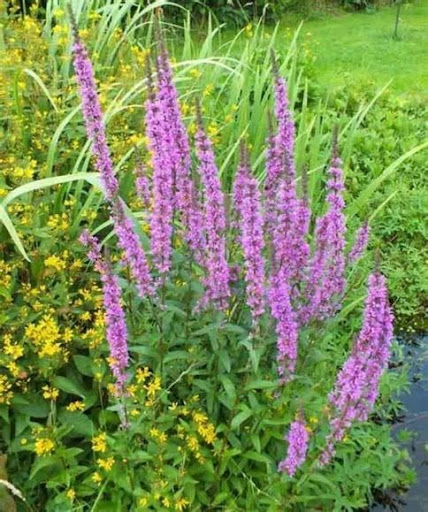Conservation Corner is a weekly article produced by the Forest County Land Conservation and Land Information Department. For more information contact Lucas O’Brien, Forest County Land Conservation Technician at 715-478-1387 or by e-mail at
Purple loosestrife (Lythrum salicaria), with its vibrant magenta blooms, is a plant that charms the eye but is really damaging the natural plant community. Originally introduced to North America in the 19th century for ornamental purposes, this invasive species has become a significant threat to wetlands, choking out native plants and disrupting delicate ecological balances. The plant’s ability to produce millions of seeds per plant annually, combined with its adaptability to various wetland conditions, allowed it to spread uncontrollably. For example, it competes with cattails and sedges, which are essential for wetland wildlife. It also affects different birds, amphibians, and insects that rely on native plants for food and shelter leading to ecological consequences. On the economic side, purple loosestrife can degrade wetlands which can lead to costly restoration and losses of plant biodiversity. Fortunately, the small purple loosestrife beetle has emerged as a natural solution to this environmental challenge. These beetles are specialists, meaning they feed almost exclusively on purple loosestrife, making them ideal candidates for controlling the invasive plant without harming native flora. These beetles attack loosestrife in two stages of their life cycle. Adult beetles feed on the leaves, creating small holes into the leave, while the larvae consume leaf tissue and flower buds. Both life stages of these beetle’s help weaken the plant, reducing the ability to photosynthesize, and significantly drops seed production. Over time, this biological pressure can lead to a decline in loosestrife populations, allowing native plants to reclaim their territory. Forest County teams up with Lumberjack Resource Conservation and Development Council, inc. to help enhance the natural resources for the county. When we collaborate with Lumberjack for purple loosestrife, we have greenhouse cages that are full of purple loosestrife that were handpicked from sites. We then go out and collect some starter beetles and release them into these cages to eat on the purple loosestrife, but also to reproduce rapidly and grow the number of beetles in these cages. Then in late July-August we release these beetles on sites with dense purple loosestrife populations to help prevent it from spreading further. The purple loosestrife beetle exemplifies how nature can provide solutions to environmental challenges when approached thoughtfully and responsibly. While these tiny insects alone cannot completely eradicate purple loosestrife, they play a vital role in reducing its dominance and giving native plants a fighting chance. Combined with other restoration strategies, the beetles are helping to heal wetlands and protect the biodiversity that depends on them.

